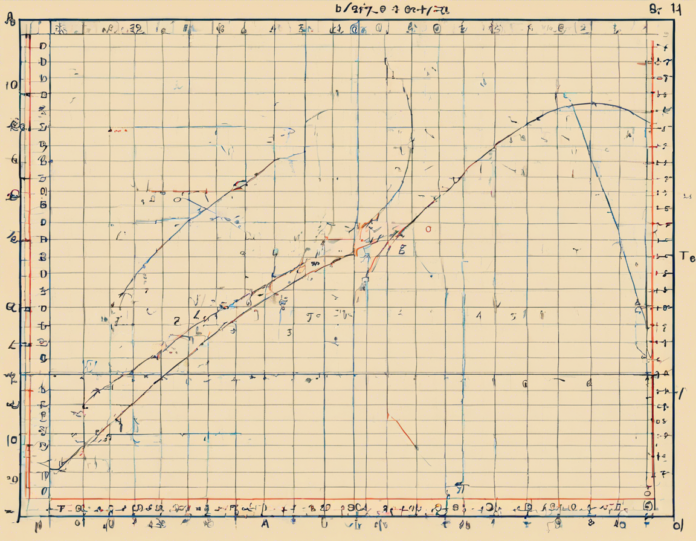Polynomials are ubiquitous in mathematics and are a fundamental concept in algebra. They are used to model a wide range of phenomena in various scientific fields such as physics, computer science, economics, and engineering. In this article, we will delve into a specific type of polynomial known as Polynomials of Degree N.
What is a Polynomial?
A polynomial is a mathematical expression consisting of variables, coefficients, and exponents. It can have one or more terms, where each term is a product of a coefficient and one or more variables raised to non-negative integer exponents. The general form of a polynomial is:
[ P(x) = a_n x^n + a_{n-1} x^{n-1} + \ldots + a_1 x + a_0 ]
where ( a_n, a_{n-1}, \ldots, a_1, a_0 ) are the coefficients, ( x ) is the variable, and ( n ) is the degree of the polynomial.
Understanding Polynomials of Degree N
Polynomials of Degree N refer to polynomials where the highest power of the variable is ( n ). The degree of a polynomial is determined by the highest exponent of the variable with a non-zero coefficient. For example, in the polynomial:
[ P(x) = 3x^4 – 2x^2 + 5 ]
The degree of the polynomial is 4 because the highest power of ( x ) with a non-zero coefficient is 4.
Characteristics of Polynomials of Degree N
-
Number of Roots: A polynomial of degree ( n ) can have at most ( n ) real roots. This is known as the Fundamental Theorem of Algebra.
-
Turning Points: A polynomial of degree ( n ) can have at most ( n-1 ) turning points. These are the points where the derivative of the polynomial is zero.
-
End Behavior: The end behavior of a polynomial of degree ( n ) depends on the leading term. If the leading coefficient is positive and ( n ) is even, then the ends of the graph point upwards. If ( n ) is odd, the ends point in opposite directions. If the leading coefficient is negative, the behavior is reversed.
Common Types of Polynomials
-
Linear Polynomials: Polynomials of degree 1 are called linear polynomials. They have the form ( ax + b ), where ( a ) and ( b ) are constants.
-
Quadratic Polynomials: Polynomials of degree 2 are called quadratic polynomials. They have the form ( ax^2 + bx + c ), where ( a ), ( b ), and ( c ) are constants.
-
Cubic Polynomials: Polynomials of degree 3 are called cubic polynomials. They have the form ( ax^3 + bx^2 + cx + d ), where ( a ), ( b ), ( c ), and ( d ) are constants.
Operations on Polynomials of Degree N
-
Addition and Subtraction: To add or subtract polynomials, simply combine like terms. For example, to add ( 3x^2 + 2x + 5 ) and ( 2x^2 – x + 3 ), add the coefficients of like terms.
-
Multiplication: To multiply polynomials, use the distributive property. Foil method is often employed for multiplying two binomials.
-
Division: Division of polynomials involves long division or synthetic division. The result may not always be a polynomial.
Applications of Polynomials of Degree N
-
Curve Fitting: Polynomials are commonly used in curve fitting to approximate data points. By fitting a polynomial of the appropriate degree to a set of data, we can interpolate or extrapolate values.
-
Calculus: Polynomials play a crucial role in calculus, especially in integration and differentiation. The derivatives of polynomials follow simple rules, making them ideal for calculus applications.
-
Engineering: Polynomials are used in engineering to model physical systems and analyze their behaviors. Control systems, signal processing, and structural analysis are some areas where polynomials are extensively used.
Frequently Asked Questions (FAQs)
Q1: What is the degree of a polynomial?
A polynomial’s degree is the highest power of the variable with a non-zero coefficient.
Q2: What is the leading coefficient of a polynomial?
The leading coefficient is the coefficient of the term with the highest power of the variable.
Q3: How many turning points can a polynomial of degree N have?
A polynomial of degree N can have at most N-1 turning points.
Q4: Can a polynomial of degree N have more than N real roots?
No, by the Fundamental Theorem of Algebra, a polynomial of degree N can have at most N real roots.
Q5: How do you determine the end behavior of a polynomial?
The end behavior of a polynomial is determined by the leading term. Positive leading coefficients result in upward or downward ends, depending on the degree, while negative leading coefficients reverse the behavior.
In conclusion, Polynomials of Degree N are essential mathematical entities with diverse applications in various fields. Understanding their properties, operations, and applications can provide valuable insights into complex mathematical problems and real-world scenarios. If you have any questions or need further clarification, feel free to ask in the comments below.







